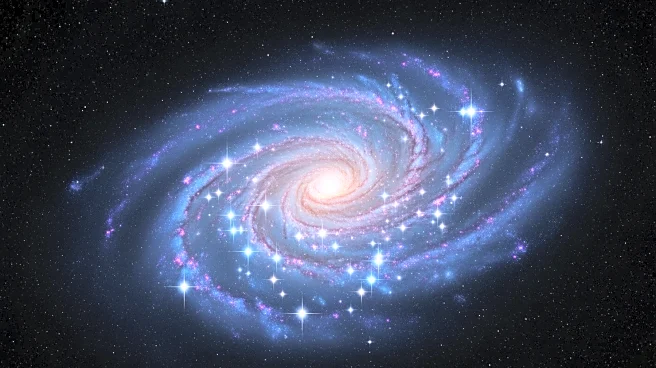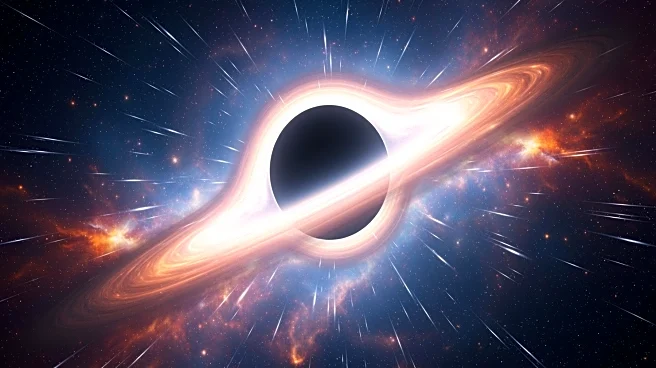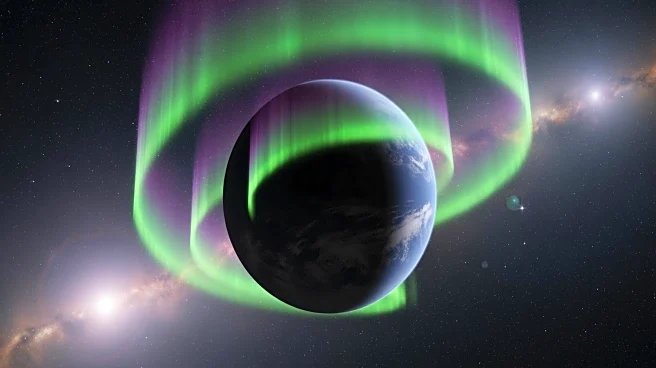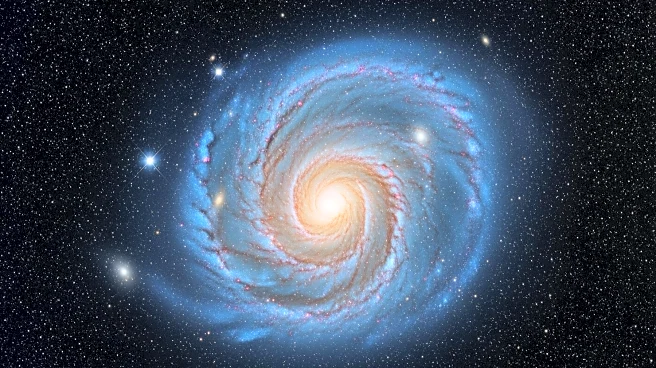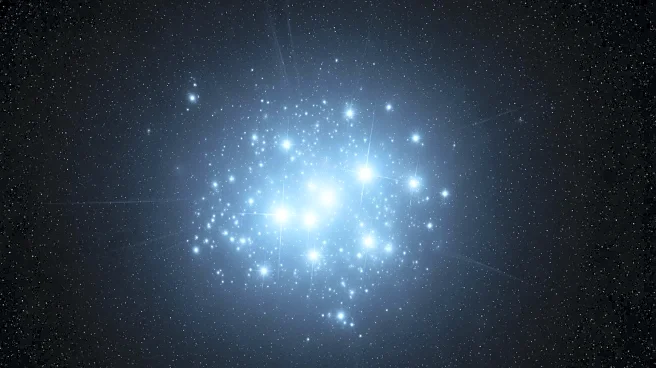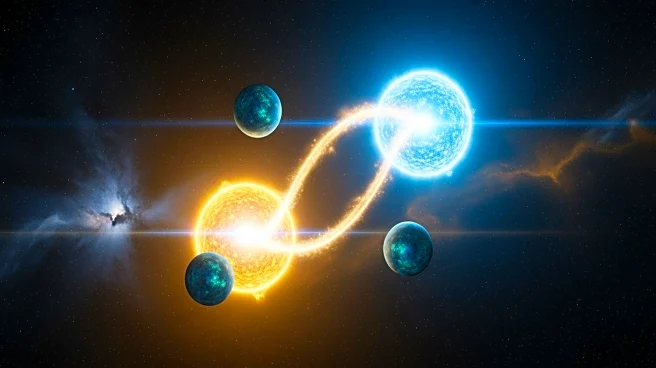What's Happening?
Astrophotographer Ronald Brecher has captured a stunning image of the Triangulum Galaxy, showcasing its active star-forming regions. Located about three million light-years from Earth, the Triangulum Galaxy, or M33,
is known for its rapid star formation, occurring at a rate ten times faster than the neighboring Andromeda Galaxy. Brecher's photograph highlights the galaxy's unique structure, which lacks a large central bulge and may not contain a supermassive black hole. This image was achieved using new astrophotography equipment, demonstrating advancements in capturing cosmic phenomena.
Why It's Important?
Brecher's image of the Triangulum Galaxy provides valuable insights into the processes of star formation and galactic evolution. The galaxy's high rate of starbirth offers clues about the conditions that lead to such activity, contributing to our understanding of cosmic development. This research is significant for astronomers studying the lifecycle of galaxies and the factors influencing star formation. The image also showcases the capabilities of modern astrophotography equipment, inspiring further exploration and discovery in the field of astronomy.
What's Next?
The study of the Triangulum Galaxy will continue to be a focus for astronomers, with potential research exploring its star formation mechanisms and structural characteristics. Future observations may investigate the galaxy's interactions with neighboring galaxies and the implications for its evolution. Brecher's work may encourage other astrophotographers to explore similar cosmic phenomena, utilizing advanced equipment to capture detailed images. The ongoing study of M33 could lead to new discoveries about the dynamics of star-forming galaxies and their role in the universe.
Beyond the Headlines
Brecher's photograph raises questions about the future of the Triangulum Galaxy, including the possibility of a collision with the Milky Way. Such an event could dramatically alter both galaxies, providing a unique opportunity to study cosmic interactions. The image also highlights the role of technology in advancing astrophotography, with new equipment enabling more detailed and accurate captures of distant galaxies. This technological progress may lead to a deeper understanding of the universe and inspire future generations of astronomers.
